Buying Laminated Printing? Here Are 7 Things to Keep in Mind
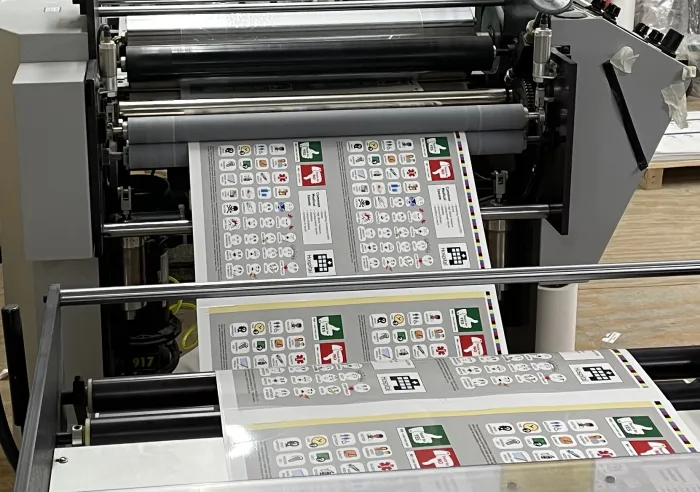
estimated reading time: 7 minutes
Buying Tips for Laminated Printing
Many print projects have a durable laminate applied as a
finishing step. Made of a strong plastic film, laminates protect the paper and
ink from dirt, moisture, scuffs, and tears. In addition to improving resilience
and increasing longevity, laminates are also used to enhance the texture,
rigidity, and sheen of printed pieces.
Printed items that will be handled frequently and/or used in
environments where dirt, grease, or moisture might be present are good
candidates for lamination. Examples of print projects frequently ordered with
lamination include restaurant and bar menus, placemats and counter mats, cards
and tags, field guides, book covers and bookmarks, reference sheets, training
materials, brochures and marketing pieces, machinery signage, and game boards.
If you have an upcoming print project and are planning to have
a laminate applied, here are some tips and suggestions that may come in handy…
1. Gloss laminates are very popular, but don't forget about Matte and Soft Touch
When most people think of laminated printing, they tend to
think of a Gloss laminate. Gloss laminates are popular because the shiny and
reflective surface adds vibrancy to the underlying ink colors. As such, gloss
laminates are great for image-heavy documents because it gives photos and designs
more eye-catching "pop." Also, the slick surface of a gloss laminate is highly resistant
to dirt and easy to keep clean.
Though gloss laminates have widespread use, Matte laminates
offer unique benefits as well. Matte laminates are non-reflective and provide a
softer and more natural look than gloss. Matte laminates also have a slight
texture, giving them a premium feel. Though not as dirt resistant as gloss
laminates, matte laminates are ideal for text-heavy documents because the
reduced glare makes for easier reading.
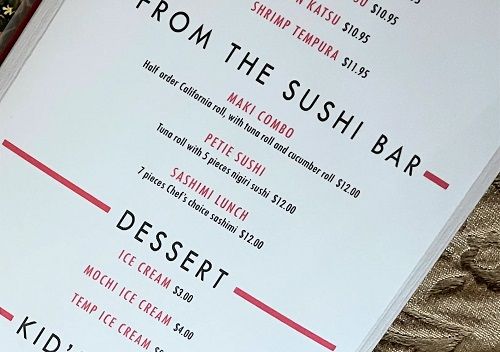
Soft Touch laminates are aptly named because they appeal to
the sense of touch. The velvety texture of a soft touch laminate offers a unique
tactile experience. Like matte laminates, soft touch laminates are non-reflective
and give a subdued look to ink colors. Though not as scuff resistant as a gloss
laminate, soft touch laminates are used primarily to add a distinctive feel to print
materials, such as brochures, presentation folders, business cards and other
pieces designed to impress clients and prospects.
2. A Flush-Cut edge offers a cleaner look but doesn't protect as well as a Sealed Edge
Laminated printing involves bonding a sheet of plastic film
to both sides of a printed piece. A Flush Cut edge means the plastic film is
cut flush with the edge of the paper substrate. This provides a very clean edge.
A Sealed Edge, on the other hand, means the top and bottom laminate
sheets extend slightly beyond the edges of the printed piece on all sides. This
allows the top and bottom laminate sheets to bond to each other around the
entire perimeter, thus sealing the edge and enclosing the entire printed piece in
plastic.
Though the flush cut method is very aesthetically appealing,
it leaves the edge of the printed substrate unprotected, making it vulnerable
to dirt, moisture, and other contaminants that could potentially seep in.
So, if the primary concern for a print project is
protection, a sealed edge laminate will be the better option because it provides
a more complete seal than a flush cut laminate.
However, if the primary concern for a project is to have
clean edges and high visual appeal, then a flush cut laminate is the better
choice.
3. For Waterproof Books, extend the edge of the laminate to accommodate the Plastic Coil
The pages and cover of a book can be made waterproof by enclosing
them within a sealed-edge laminate. The book can then be bound with a coil made
of PVC plastic, which is also waterproof.
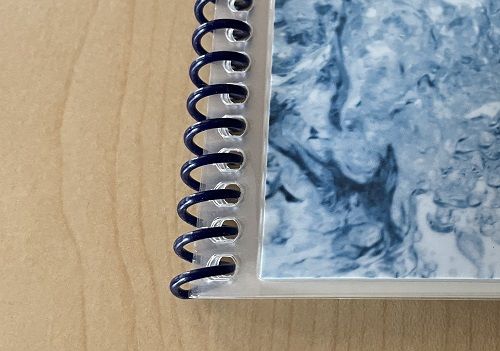
To ensure no moisture is able to come in contact with the paper
substrate, the holes drilled for the coil binding spine must penetrate the
laminate only and not the underlying paper. This requires the sealed-edge laminate
along the spinal edge of the book to be extended further than it is on the
other three sides of the book.
Extending the laminate along the binding edge of the book provides
the extra area needed for the series of drilled holes into which the binding
coil is inserted. By ensuring the holes only penetrate the laminate and not the
paper substrate, the integrity of the waterproof seal is maintained.
4. Compare the Cost of a Thin Laminate applied over a Thick Paper Stock to the cost of a Thick Laminate applied over a Thin Paper Stock
When using a laminate to add thickness and enhance durability,
it is worth comparing the cost of a thin laminate applied over a heavier paper
stock or cardstock versus the cost of a heavy laminate applied over a thinner
paper stock. Many times, using a thinner laminate over a heavy stock will be
the cheaper option, so it is worth checking out the price difference.
For example, let's say you are looking to create some laminated
flash cards with an overall thickness of 24 points (.024").
One option would be to laminate 80# gloss text (.004") with a
10mil laminate (.010"). This would result in the desired overall thickness of
.024" (.010" + .004" +.010").
Another option would be to laminate 18pt cardstock (.018") with
a 3mil laminate (.003"). This would also result in an overall thickness of .024"
(.003" + .018" +.003").
Both options result in the same overall thickness, but the second
option (thinner laminate over heavy cardstock) will almost always be more
affordable.
5. Consider Rounding the Corners of thicker laminates for Safer Handling
As the thickness of a laminate increases, it will naturally
be stiffer and more rigid. Hence, a 90 degree corner can become a safety
hazard. So it is recommended that any sharp corners of laminated pieces be rounded
off to prevent injury. This is particularly important if the laminated printing
will be handled by young children.
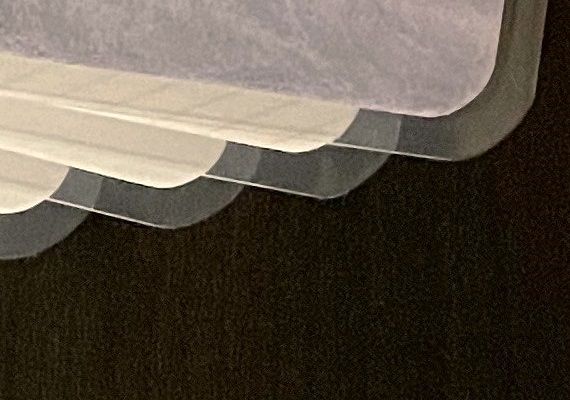
Rounded corners are almost always recommended for 10 mil laminates. Projects that use a 5 mil laminate will usually depend on the thickness of the base substrate to determine if square corners will pose a risk of injury. The 1.5mil and 3mil laminates are flexible enough that the corners do not need to be rounded.
Depending on the project and customer preference, various radii
are used for rounding the corners of printed pieces. Most commonly, rounded
corners are made with a radius of 1/8", 1/4", 3/8" or 1/2".
6. For some projects, a Gloss UV Coating might be a less expensive alternative to Lamination
If you are looking to add a glossy sheen to printed pieces
but don't really need the extreme toughness that a laminate provides, a gloss UV
coating is worth consideration. Whereas a laminate is applied as a plastic film,
a UV coating involves applying a polymer resin in liquid form. The resin
solidifies when exposed to intense Ultraviolet (UV) light during the production
process.
The shiny appearance of a gloss UV is actually comparable to
that of a gloss laminate. Also, just like a gloss laminate, a gloss UV coating makes
ink colors appear deeper and more vibrant. As such, it is a popular choice for full-color print materials used for marketing and promotional purposes, such as postcards,
flyers, door hangers, and posters.
Though not as hard wearing or water resistant as a laminate
film, a gloss UV coating does offer a moderate layer of protection against
stains, spills, and scuffs. A UV coating also costs less than a laminate, so it
can be a good alternative for a variety of projects.
7. Thick Laminates are Not Suitable for Projects that will require Folding
When creating printed pieces that will require folding, such
as promotional brochures or restaurant menus, be mindful of the laminate
thickness you plan to use. Thicker laminates, such as a 5mil or 10mil laminate,
are not suitable for folding. Only the thinner laminates, such as the 1.5mil or
3mil, are pliable enough to be folded.
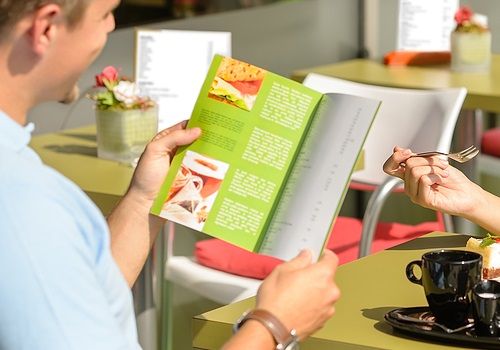
If a printed piece needs the durability of a laminate but
will also require multiple folds, such as maps of hiking trails or mountain biking
routes, synthetic paper is an excellent fit. Synthetic paper resists dirt, mud,
and water and can be easily wiped clean. Plus, it folds just like traditional paper.
Did you know Color Vision specializes in Laminated Printing?
Color Vision has been providing quality printing and
laminating services since 1984. As a full-service provider, we offer just about
every type of laminate option you could need. Best of all, our prices for
laminated printing are among the lowest you will find anywhere.
So if you are looking for affordable printing and laminating
services, be sure to give us a call at 800-543-6299 to discuss your project.
Or, use our simple Quote Request form to send us your specifications and will
be happy to email a custom quote to you.
As always, we look forward to assisting with
your printing and laminating needs and hope to hear from you soon!
Related Articles
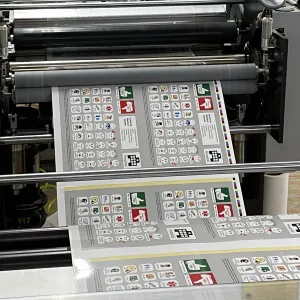
Buying Laminated Printing? Here Are 7 Things to Keep in Mind
Read This Article
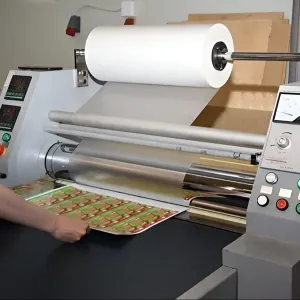
Laminated Printing Services: 8 Frequently Asked Questions
Read This Article
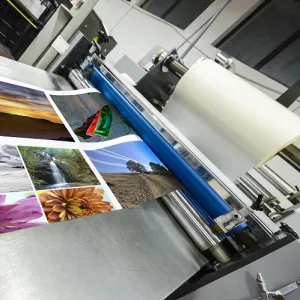
Printing and Laminating: What Thickness of Laminate is Best?
Read This Article
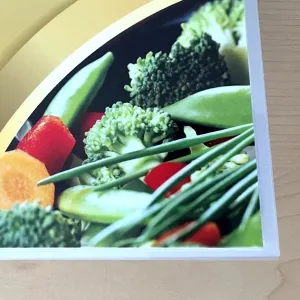
Laminated Printing: Is a Sealed Edge or Flush Cut Better?
Read This Article
- 1
- 2